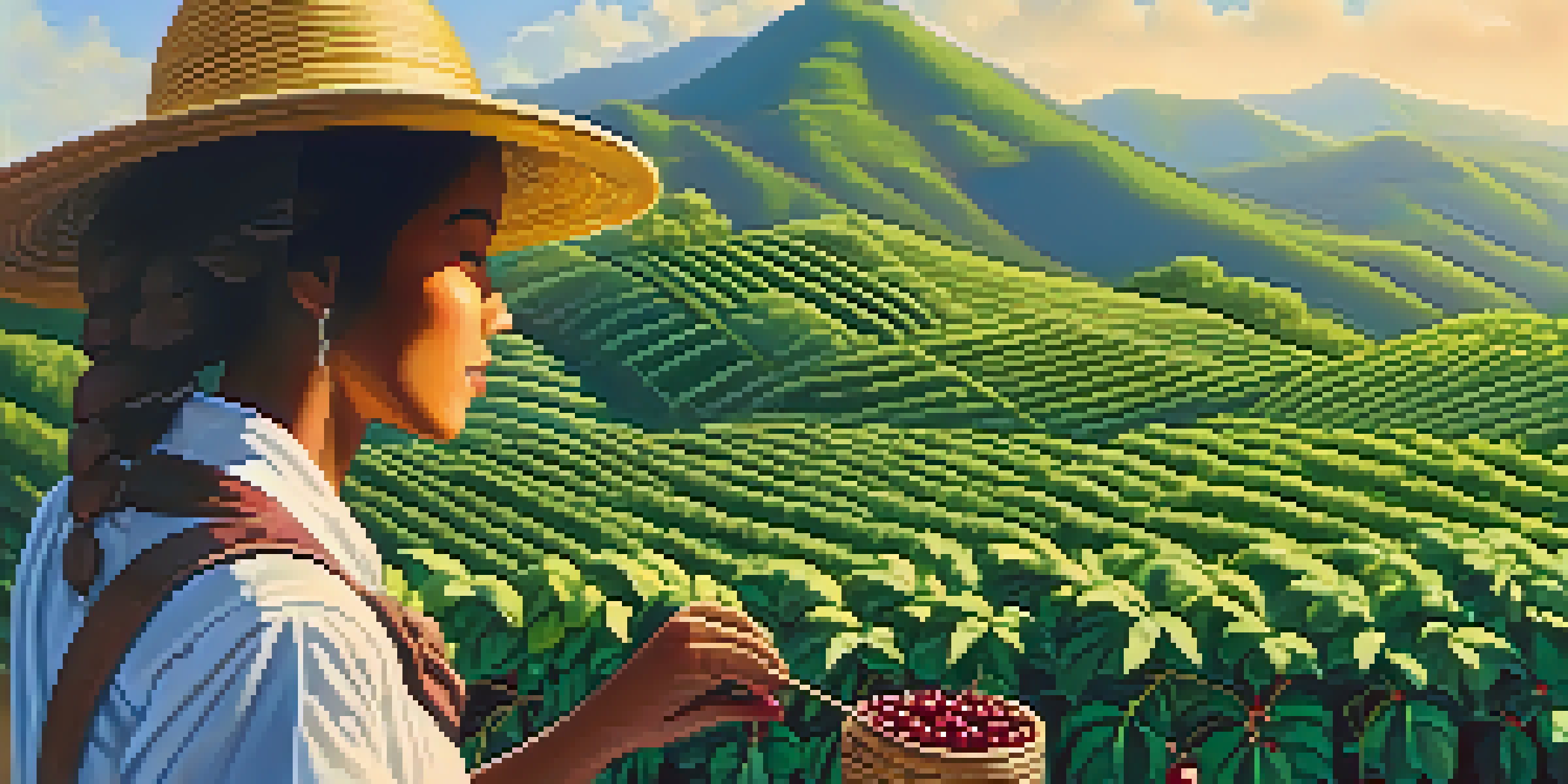Coffee Cultivation Techniques in Brazil: A Deep Dive

Overview of Coffee Cultivation in Brazil
Brazil is the world's largest coffee producer, contributing about a third of the global coffee supply. The country's diverse climate and topography create ideal conditions for coffee growth, particularly in regions like Minas Gerais, São Paulo, and Espírito Santo. Understanding the cultivation techniques used here is essential for appreciating the distinct flavors of Brazilian coffee. From traditional methods to innovative practices, Brazil offers a rich tapestry of approaches to coffee farming.
Soil Preparation and Fertilization Techniques
Soil health is crucial for coffee cultivation, and Brazilian farmers often employ comprehensive soil preparation techniques. This includes testing soil pH and nutrient levels to tailor fertilization strategies, ensuring optimal growth conditions. Organic fertilizers, such as compost and green manure, are increasingly popular, helping to maintain soil fertility while promoting sustainability. By enriching the soil, farmers can enhance the quality of the beans produced.
Brazil Dominates Global Coffee Production
As the world's largest coffee producer, Brazil's unique climate and farming techniques contribute significantly to the global coffee supply.
Water Management: Irrigation and Rainfall Control
Water management is vital in coffee cultivation, especially in regions with variable rainfall. Brazilian farmers use various irrigation systems, including drip and sprinkler methods, to ensure consistent moisture levels. This not only helps in maximizing yield but also in improving the quality of the coffee beans. Additionally, techniques like mulching can help retain soil moisture, making water resources more efficient.
Pest and Disease Management Strategies
Protecting coffee crops from pests and diseases is an ongoing challenge for Brazilian farmers. Integrated Pest Management (IPM) techniques are commonly used, combining biological controls with careful monitoring. This approach helps minimize the use of chemical pesticides, promoting a healthier ecosystem. Farmers often rely on natural predators and resistant coffee plant varieties to reduce infestations and ensure a sustainable harvest.
Sustainable Practices Enhance Quality
Brazilian coffee farmers are increasingly adopting sustainable methods, such as shade-grown coffee and organic certifications, which not only benefit the environment but also improve the quality of the beans.
Harvesting Techniques: Hand-Picking vs. Mechanization
Harvesting coffee in Brazil is a blend of tradition and modernity, with both hand-picking and mechanization playing significant roles. Hand-picking, which is labor-intensive, allows for the selection of only ripe cherries, ensuring higher quality coffee. On the other hand, mechanized harvesting is becoming more common in flat terrains, increasing efficiency and reducing labor costs. Each method has its pros and cons, and the choice often depends on the specific farm's circumstances.
Post-Harvest Processing Methods Explained
After harvesting, the way coffee cherries are processed can significantly impact flavor. Brazilian farmers often use either the dry or wet processing method. The dry method involves sun-drying the cherries, which can enhance sweetness, while the wet method involves fermenting the cherries before drying, resulting in a cleaner taste. Understanding these processes is essential for appreciating the complexity of Brazilian coffee flavors.
Future of Coffee is Innovative and Adaptable
In response to climate change, Brazilian farmers are exploring innovative solutions like climate-resilient coffee varieties and precision farming to ensure the future of coffee cultivation.
Sustainability Practices in Coffee Farming
Sustainability is a growing focus in Brazilian coffee cultivation, with many farmers adopting eco-friendly practices. This includes shade-grown coffee, which helps preserve biodiversity and improve soil health. Additionally, initiatives promoting fair trade and organic certifications are gaining traction, ensuring that farmers receive fair compensation while minimizing environmental impact. These practices not only benefit the planet but also enhance the quality of coffee produced.
The Future of Coffee Cultivation in Brazil
As climate change poses challenges to coffee cultivation, Brazilian farmers are exploring innovative solutions. This includes developing climate-resilient coffee varieties and utilizing technology for precision farming. Moreover, collaborations between farmers, researchers, and organizations are essential for sharing knowledge and resources. The future of coffee cultivation in Brazil hinges on adaptability and sustainability, ensuring that this beloved beverage continues to thrive.